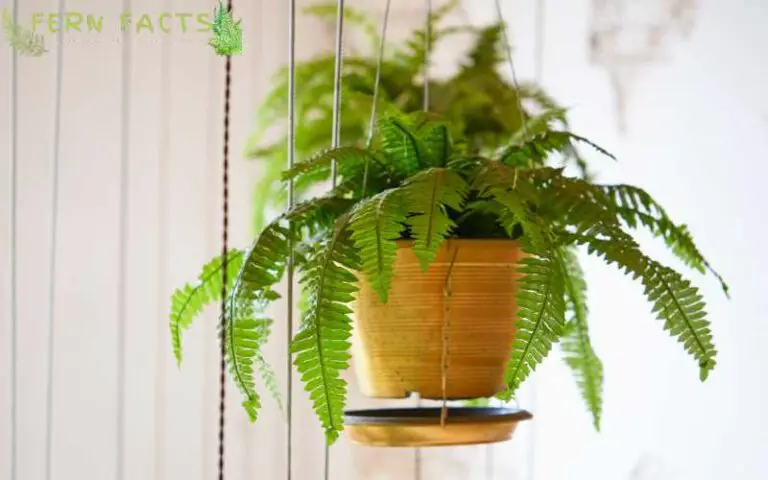What Type of Soil Do Ferns Like
Do you know what type of soil the fern likes? For having healthy growing fern, a good soil mixture is a key part of growing any ferns. Don’t look tense!
Here I’ll be sharing what types of ferns you like along with what you should consider while making your own potting soil.
Besides, I’ll also give you an idea about how to make good potting soil for your ferns as well as tips to increase the soil’s condition. So let’s start this journey.
What Kind of Soil Ferns Like?
Most ferns prefer well-drained rich humus soil to grow and thrive. These kinds of soil give an adequate level of nutrients to the plant’s roots where the plant’s growth enhances.
Similarly, this soil creates an excessively perfect base where ferns grow actively.
What Should You Consider for Making Fern Soil?
Since most of the ferns prefer rich humus organic compost in their potting mixture; therefore you need to maintain the soil’s pH level, nutrient level, and water draining system.
These three things are mostly a primary concern for you when you are about to mix any soil.
Soil’s Ph Level
The majority of ferns enjoy moderate to slightly acidic or neutral soil for their active growth. In general, the average pH is around 6.0 for any ferns.
However, it can be more or less according to the fern’s individual species requirements. But, mostly it stays between 5.0 to 7.0 pH. You can also adjust the pH level by adding lime to the soil.
Alternatively, you can also lower the pH level of the soil by adding sulfur to it. If your soil is mostly alkaline soil that contains a high pH of around 8.5; in such cases, you can adjust the soil’s pH level by adding one to three portions (28g-85g) of ground rock sulfur as well as 1 square yard (0.8 square m) of soil.
It will balance the soil’s acidic portion to a moderate level. On the other hand, if your garden soil lacks an acidic amount, then you can increase the acidic level by adding lime or limestone to the soil.
Since limestone contains calcium and magnesium elements, it will increase the soil’s pH level automatically. You can buy any pH tester machine to measure your garden’s soil level.
According to the pH level of your garden, you can readjust the soil’s condition by increasing or lowering the level.
Well-drained Soil
Ferns also prefer well-draining soil that can help to drain all the excessive water from the soil. A well-drained soil helps the soil from preventing water-logged situations.
Additionally, well-drained soil also prevents root rot situations of ferns and keeps them healthy for a longer time. Similarly, this type of soil absorbs all the excessive water from the soil and prevents waterlogged situations.
If the soil doesn’t have well-drained properties, it cannot absorb excessive water. Therefore, excessive water will remain on the plant.
Gradually, these standing water conditions will create soggy and mushy roots which will eventually start to rot at some point. Thus, well-drained soil must have things for you while you are making your fern’s soil.
You can simply make well-drained soil by adding mulch, organic compost, and manure. If the soil becomes poor, you can improve the soil’s condition by adding perlite, vermiculite, peat moss, and loam in the soil.
All these minerals will increase the soil’s poor condition and will make it a well-drained soil.
Organic-rich Soil
Moreover, organic matter helps soil to sustain moisture in it. If the soil is moist enough, it will prevent drought conditions in the plants. And so, hydrated soil will release moisture from time to time in the plant’s roots.
This will also help ferns to remain hydrated even in the warmer conditions. By adding leaf mold, organic compost, and aged manure to the soil.
Overall it will improve the soil’s humus and nutrient conditions and help your soil to hold moisture for lengthy periods. Also, you can add peat moss and coconut coir to retain the soil moisture level as well.
How to Make Good Potting Soil for Fern?
As I already told you, ferns prefer moist, acidic soil with good drainage properties. For making good potting soil for your ferns, you can add high-quality organic compost, peat moss, perlite, vermiculite, leaf mold, etc.
If your soil is more acidic, then reduce the soil’s acidic level by adding limestone. If your garden soil contains less acidic and neutral benefits, then add abundant peat moss and vermiculite to the soil in order to increase the soil’s drainage and moisture-holding capacity.
Generally, you can add an equal amount of all the minerals and can make high nutrient-based soil for your ferns.
However, you can add 50% Garden soil or loam, 10% perlite/vermiculite, 5% leaf mold, 25% organic compost, and 10% peat moss or coconut coir. Give it a good hand mix and make your own potting soil at home.
Additionally, you can also buy ready-made potting soil (all-purpose) from the marketplace according to your fern’s species. But if you want to make it more organic and homemade, you can make the soil at home as well.
Occasionally Supplement for Increasing Soil’s Condition
Now let’s look for some maintenance tips where you can increase soil’s condition over the years.
Repotting
At some point, the soil’s rich humus quality starts to fade away. Over the passing years, the soil starts to lose all its beneficial nutrients from it.
Therefore, you need to repot your fern with a new potting soil mixture so that they can get nutrition properties.
If your ferns become 2 to 3 years old, then you must have to repot your ferns to a new pot with new potting soil. It will help to improve their growth.
Fertilizing
The three main proponents of soil are magnesium, potassium, and phosphate. These three chemicals increase soil’s nutrition quality and help your ferns to have robust growth.
For that reason, you need to add fertilizing during your fern’s growing seasons. It will enrich the soil’s condition periodically.
Last Statement
To conclude, fern’s one of the key growing requirements is moist, well-drained, and rich soil. If the soil contains all nutritional ingredients and benefits, it will help ferns to grow robustly.
The majority of ferns prefer moderate to slightly acidic soil around a 6.0 pH level. Similarly, well-drained, rich-humus soil is also a blessing for every fern to grow actively.
Because well-drained soil helps to prevent waterlogged situations and rich humus soil provide all the nutritional benefits to the plant’s body.
Therefore, a good soil mixture with organic compost, peat moss, perlite, vermiculite, leaf mold, and coconut coir helps ferns to have immense growth.
Additionally, occasional fertilizing and repotting will also enrich the soil’s condition. By understanding all these soil compositions, hopefully, you can make your own potting soil for your ferns.







